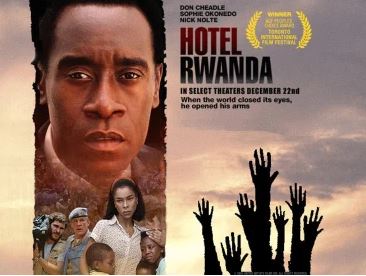
My longest movie dry spell was broken this September. My local movie house reopened with restrictions including seating limits and wearing masks the whole time during the display of film. Masks have been used almost universally to represent characters in theatrical performances. From Cantonese opera to Japanese kabuki, I have seen colorful masks painted on actors’ faces. Never had I thought that this was this audience’s turn, but for a different reason. Wearing a mask to a theater became a prerequisite of my first moviegoing after more than half a year.
Masked on, I entered the theater as if I were about to launch a heist in an empty dark room. This was a test of my psyche as lockdown and social distancing had worn out my trust of the outside. I presumed I might have contracted the invisible virus no matter whether I wore a mask or not. I had it the minute when I exposed my skin save for my nose and mouth to countless airborne particles. In a nearly vacant auditorium, I could say I had the luxury of owning the big screen all to myself, ready for a Victorian time travel to the latest rendition of my beloved Charles Dickens’s work, David Copperfield. Starring Dev Patel as Copperfield, the movie captured the first person voice that was unique to the original work. In fact, the movie title, The Personal History of David Copperfield, highlighted the bibliographical texture of fiction in the voice of “I.” I am not a Brit but I have also the classic lit fever that has burnt many a Briton’s heart these days during lockdowns. People have more time to read and they read classic literature. I don’t just read David Copperfield. I am ambitiously dreaming I could enliven my own adaptation of David Copperfield in my work-in-progress fiction.
When Dickens traveled to America in 1842 he saw slavery in Richmond, Virginia. He detested the cruelty of slavery and after he returned to England, he wrote scathingly about the institution of slavery. One of his observations read:
“In this district, as in all others where slavery sits brooding (I have frequently heard this admitted, even by those who are its warmest advocates): there is an air of ruin and decay abroad, which is inseparable from the system.”
—Charles Dickens
I wonder how the author would view his Copperfield in the 2019 film with brown skin and Indian features in the 2019 film. Moreover, the movie has the most inclusive cast: actors of minority Asian and African ethnic background took on important supporting roles. I felt so refreshed visually as new information from the big screen at times clashed with my conventional thinking about the British classic. I was bewildered behind my dampened mask, which was saturated with my short breath. Against the backdrop of the ongoing racial justice movement in America, I cannot help seeing this film with a progressive undertone. Is this what we want for inclusive filmmaking? Will classic ever be classic anymore if a protagonist like Copperfield can be challenged by actors with different ethnicity on the screen? Perhaps characters in my fiction with Chinese names will not matter much if a European could also take a Chinese name.
When Asian American actress Lucy Liu played Dr. Watson in American TV drama Elementary, a contemporary update of Sir Arthur Conan Doyle’s Sherlock Holmes series, her breakthrough was under criticism because it overturned the convention of a Caucasian male character. Years ago I had done just that in writing under disguise. I adopted multiple Western names to be my article byline in the hope of—upon the editor’s request—appealing to Chinese young readers who were fascinated with English writings by “native English speakers.” How to define native English speakers in China? The person gotta be European looking with an Anglo-Saxon name. Speaking of acting with a mask, didn’t I get the knack of wearing a white-faced mask to write long ago?
If only Dickens were alive, his jaw might drop like mine because of the excellent performance of the diverse cast of David Copperfield. This is how the 2019 rendition celebrates diversity—there were no black slaves in the picture but only black-skinned ladies with pride and grace (historically, black slaves were in contemporary southern America). No Chinese coolies are in the picture either, but Aunt Betsey’s happydrunk business manager Mr. Wickfield is an Asian (historically, Chinese migrants were building railroads in contemporary western America). The handsome Dev Patel was larger than life in his leading role as Copperfield. My fading memory does not recall the protagonist in the novel as a distinctively attractive man. Anyhow, with my mask on, watching this adaptation of David Copperfield quickened my heartbeat and shortened my breath.

You might ask why would I watch a 2004 movie Hotel Rwanda? The occasion was really surprising to me. I attended a virtual webinar joined by Rwandan politician Valentine Rugwabiza and Vanessa Nakate who is a teenage climate activist from Uganda. Both of these two African women impressed me with their eloquence and determination for climate action. Vanessa’s personal encounter with racism in America might have caught more global attention than her climate activism. From them, I learned that Rwanda is the first African country to present a tougher climate target to the United Nations. The small landlocked country vows to cut emissions at least 16 percent by 2030 compared with a business-as-usual baseline.
In the movie Hotel Rwanda, the hotel that the protagonist Paul Rusesabagina ran as a hotel manager was called Hôtel des Mille Collines, Hotel of A Thousand Hills in English. Rwanda is nicknamed “the Land of a Thousand Hills” for its countryside dotted with mountains, volcanoes and hillocks. Watching the movie took courage. And it’s best not to watch it before bedtime. The bloody atrocity of genocide against the Tutsi in 1994 permeated the film. According to BBC, about 800,000 people were slaughtered in just 100 days by ethnic Hutu extremists. Besides the unbearable weight of a historical tragedy in and of itself, I was also shocked by the white privilege recorded in the film when the Belgians and UN peacekeepers pulled out Rwanda and the French evacuated its citizens, predominantly white Caucasians, leaving behind Africans suffering from ethnic cleansing. What makes life of white people much pricier than those with other skin colors?
I have not written movie reviews since my last one about Weathering With You. The Japanese animated film about climate change has certainly spoken to the young Japanese and alike who are concerned about the adverse impacts of climate crisis. I should give a shoutout to Japanese Environmental Minister Shinjiro Koizumi (小泉 進次郎) for organizing the Platform for Redesign 2020, an online platform for sustainable and resilient recovery from COVID-19. I had the opportunity to watch the launch of the platform on the internet. As I marvel at how technology can change our communication, I urge the global leaders to work together for a peaceful global order. If David Copperfield could be played by any good actor regardless of skin color, if post-genocide Rwanda is leading Africa for climate action, every norm is possible to be broken in the face of climate and public health crises, isn’t it?

